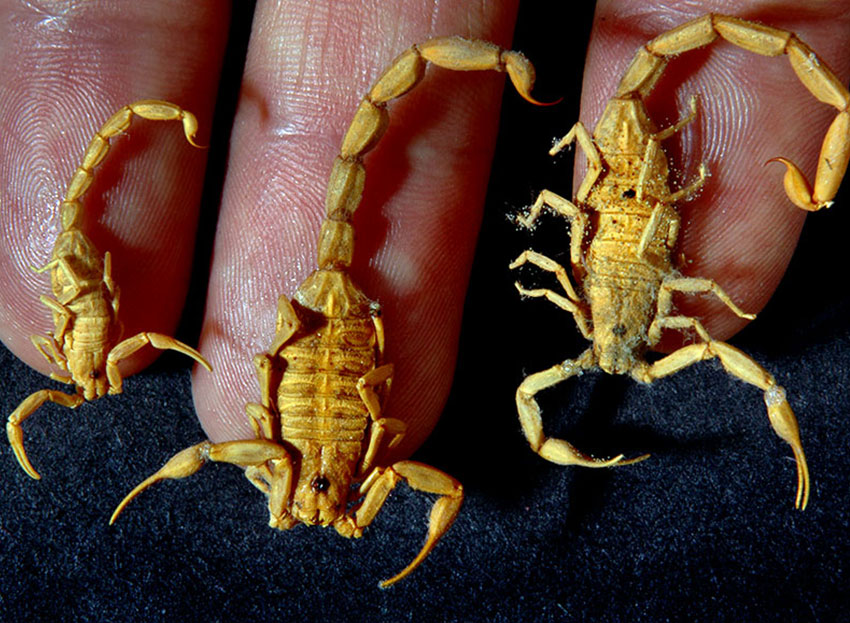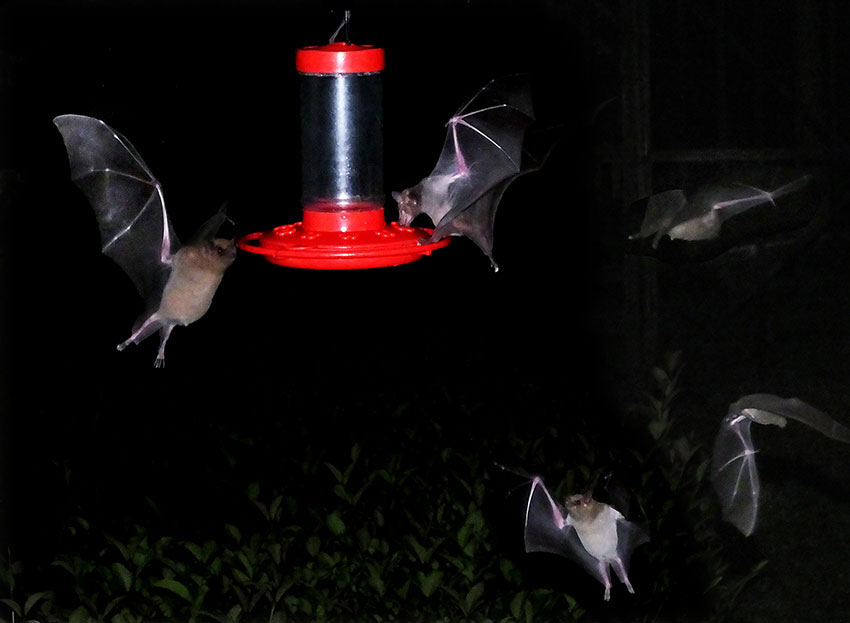Pinar de la Venta is a fraccionamiento (housing development) located eight kilometers west of Guadalajara and nestled in a mile-high forest wherein reside all sorts of creatures.
This was just what my wife and I wanted when we were house hunting many years ago: a home where we could commune with nature in rural Mexico, where we could fall asleep each night lulled by the chirping of crickets and a whole orchestra of frogs. So we made our home in Pinar de la Venta — ¡Ay qué bonito! Welcome to the woods!
So let’s begin with the bugs …
On our very first morning in Pinar, we wandered out of our bedroom only to discover the cadavers of several little yellow scorpions lying here and there on the floor. It did not take us long to figure out that it was we who had killed those scorpions — at night, mind you — while walking to the bathroom or going to the kitchen for a drink of water.
So it was we discovered our first rule for survival in rural Mexico: never walk around in bare feet at night!

Over the following months I collected enough dead scorpions to fill a jar.
Another bug we had far too many of, at the beginning, was the earwig. Unlike scorpions, they posed no danger, but oh, how annoying it was to open a book and have an earwig fall out of it straight into your coffee cup!
Every year, during “Earwig Season,” they were everywhere: under the place mats, behind every picture frame, and curled up inside the spout of every faucet.
Seasonal, too, were the invasions of ants. Long, orderly columns marching down the wall … and then there were the honeybees’ attempts to establish a home in our attic — every year, mind you!
Only after two decades did we discover the solution to bug problems in rural Mexico … and it was not fumigation.
“If you have too many bugs in your house,” said spider expert Rodrigo Orozco, “it’s because things are out of balance. If you want to restore balance, don’t use poisons — use spiders instead!”

I’m sure most readers will never believe this, but it’s true. We followed our friend’s advice and stopped killing spiders or even disturbing their webs. Within a year, we achieved a sort of “bug balance” in our home. Now we are unlikely to see a scorpion for three months and earwigs are so rare that if we happen to come upon one, we welcome it as if receiving an old friend.
As for the spiders, it is the flatty or wall crab spider (Selenops insularis) that rules in our house, one of them being in charge of each room and so unafraid of us that we’ve given them names. Step into the kitchen and there you’ll find Elmer on duty. By the way, flatties are fascinating to watch and are considered “one of the world’s fastest animals!”
Next come the birds. Despite the curse of our neighbors’ leaf blowers (which will slowly drive the more exotic birds away from any community), we still see white-collared seedeaters, black-headed grosbeaks, russet-crowned motmots, Inca doves, great kiskadees, curve-billed thrashers, brown-backed solitaires, vermilion flycatchers and rusty-crowned ground-sparrows along with all kinds of wrens and orioles.
And every morning my wife Susy has a long conversation with a pair of blue mockingbirds which are crazy about the papaya and watermelon she puts out for them daily.
In our forest, acorn woodpeckers are also common. One day we discovered a couple of them stealing the peanuts we were putting out for the foxes (see below) so we started setting out a separate plate of peanuts for the carpinteros, as they’re called in Spanish — much to the delight of the squirrels, of course, who naturally assumed those peanuts were for them.
After trying various strategies, we ended up suspending the plateful of peanuts in the air and now, every morning, dozens of woodpeckers come to, well, “steal them” is the only expression that appropriately describes their furtive arrival, nervous glances left and right, their sudden, frantic grab for a peanut and their instantaneous straight-line departure for a far-off tree branch where they consume their “booty” with obvious relish.
And then there is Moshi Moshi the hummingbird.
I no sooner step out the door every morning and there is Moshi Moshi hovering right in front of my nose. This nervous hovering is a message: “My plastic flower has gone dry!”
Then, as I go to wash the feeder, which has been sucked dry by the bats (who completely empty it every night), Moshi Moshi flies in circles around me, checking whether I have refilled it yet even though he (or she) knows I first have to rinse it out. This process has become a daily ritual.
What kind of bats empty the hummingbird feeder at night remained a mystery for a while. They take their drinks at such lightning speed that the human eye can only detect a blur. To identify them, I needed to take a photo, but my reaction time was much too slow: the first time I tried, I took 18 pictures. Seventeen of them showed an empty bird feeder — but one did capture the handsome face of our visitor: Leptonycteris yerbabuenae, the “Tequila Bat,” which pollinates the famed blue agave and is presently classified as near threatened.
When it comes to beasts, we have seen white-tailed deer, tree and rock squirrels, collared peccaries, ringtails, raccoons, Virginia opossums and white-nosed coatis — but it was the gray foxes we got to know best …
My wife loves fruit and somehow imagines that all other creatures must certainly love fruit as well. So what could be more natural than to put a plate of fruit out in the yard every night for whatever animals may be passing in the dark?
The big surprise (only to me!) was that every morning the plate was empty.
[soliloquy id="116031"]
Discovering exactly which creature was eating that fruit required frequent monitoring of the yard from a well-hidden position. Never did we expect that those fruit-eaters would turn out to be three gray foxes.
To get a better look at them, we began moving the fruit dish a little closer to our porch every night until finally we could watch them through the screen door while sitting on the sofa. At that time there was no TV in our community — but who needed it?
Eventually we learned that — in addition to sweet cantaloupes — foxes especially like raw eggs and, though it might be hard to believe, they thoroughly enjoy peanuts and are very skillful at shelling them. But the all-time favorite of those gray foxes was a plump, ripe, gooey mango … and the proof was the spotlessly clean mango pit they always left behind.
Next we shall discuss luz, or electricity, in rural Mexico and how it can wreak havoc on a computer.
The writer has lived near Guadalajara, Jalisco, for more than 30 years and is the author of A Guide to West Mexico’s Guachimontones and Surrounding Area and co-author of Outdoors in Western Mexico. More of his writing can be found on his website.
